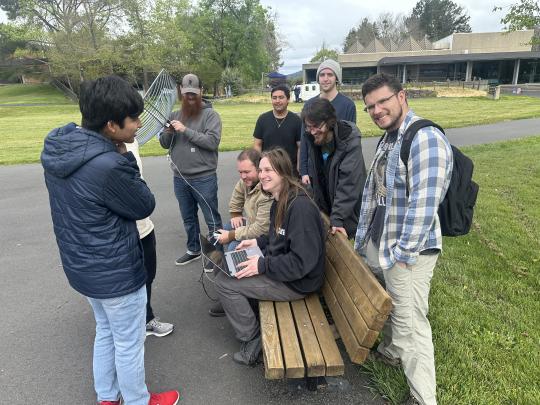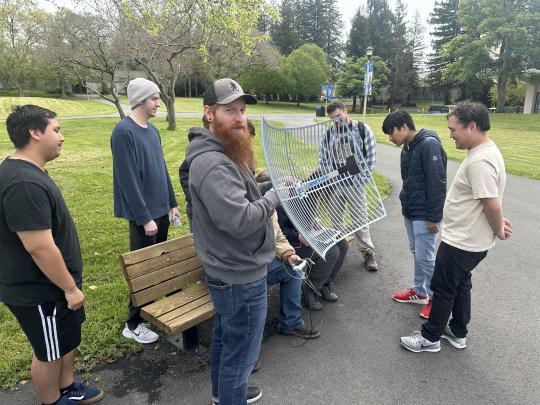Exploring the Galaxy with RTL-SDR
Students in the RF Laboratory at Sonoma State University took their learning outdoors to explore hydrogen line radio astronomy using RTL-SDR technology. Led by Professor Rob Rowlands, the class aimed to demonstrate how amateur radio astronomers can detect signals from the galactic plane with simple, affordable equipment. The goal was to observe the 21 cm hydrogen line, a frequency emitted by neutral hydrogen atoms across space, by pairing a low-cost 2.4 GHz WiFi parabolic grid antenna with an RTL-SDR and low-noise amplifier (LNA). While this initial experiment did not produce a successful detection, it sparked an enthusiastic discussion among students about the technical challenges and how to refine their approach in future attempts. This hands-on experience showcased the real-world applications of RF engineering and highlighted how students can build a functional backyard radio telescope for under $200, making space observation more accessible than ever.





